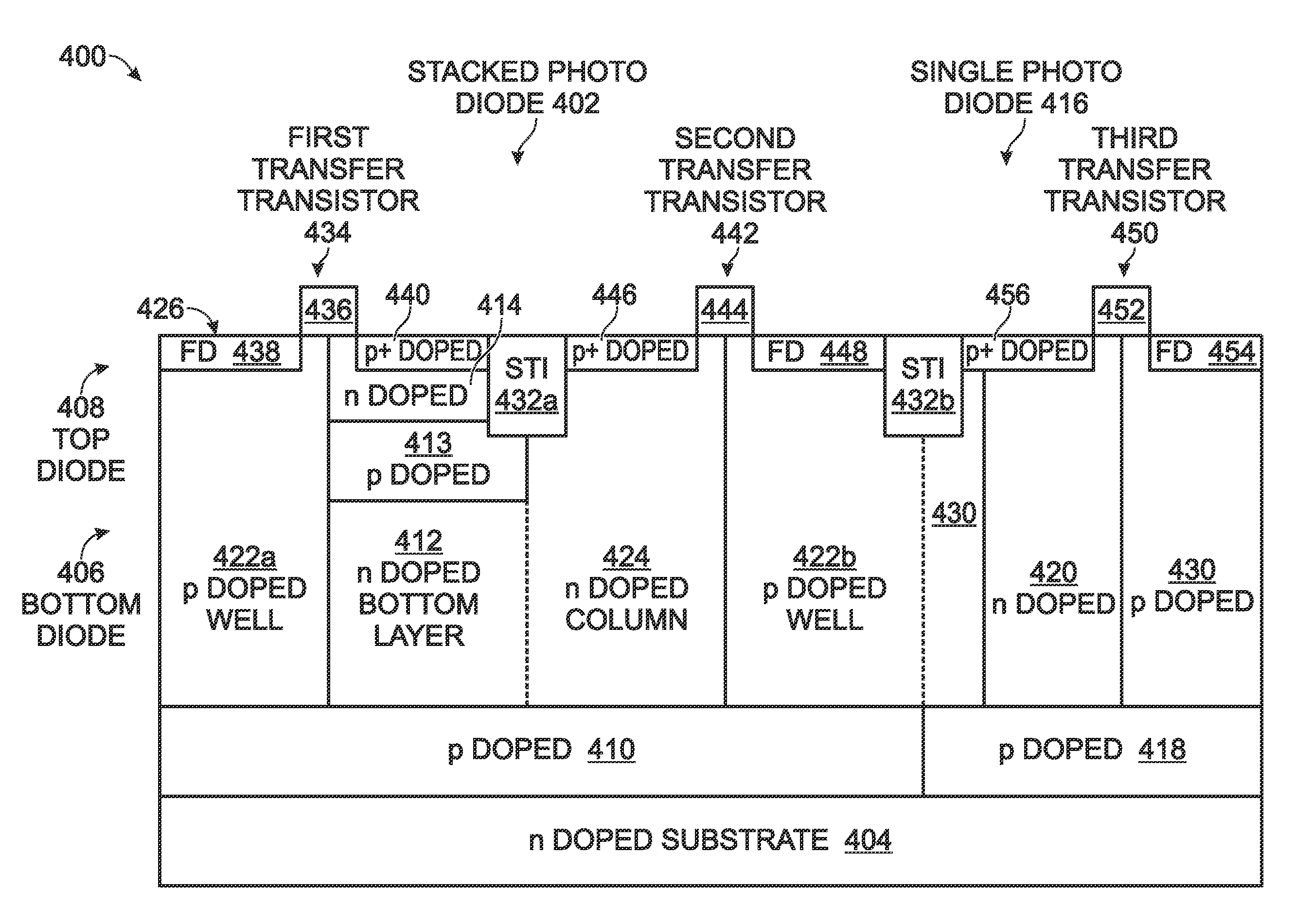Dual-pixel full color CMOS imager
a cmos imager and full color technology, applied in the field of integrated circuit (ic) fabrication, can solve the problems of color filter adding to the cost of the imager, limiting the fabrication of cmos imagers using a smaller pixel size, and limiting the pixel isolation region of the imager, so as to achieve simple integration of two pixels, small pixel isolation region, and fine features.
- Summary
- Abstract
- Description
- Claims
- Application Information
AI Technical Summary
Benefits of technology
Problems solved by technology
Method used
Image
Examples
Embodiment Construction
[0031]FIG. 4 is a partial cross-sectional view of a dual-pixel full color CMOS imager. The imager 400 comprises a two-photodiode stack 402 including an n doped substrate 404, a bottom photodiode 406, and a top photodiode 408. The bottom photodiode 406 includes a bottom p doped layer 410 overlying the substrate 404 and a bottom n doped layer cathode 412 overlying the bottom p doped layer 410. The top photodiode 408 has a top p doped layer 413 overlying the bottom n doped layer 412 and a top n doped layer cathode 414 overlying the top p doped layer 413. A single photodiode 416 includes the n doped substrate 404, a p doped layer 418 overlying the substrate 404, and an n doped layer cathode 420 overlying the p doped layer 418.
[0032]An n doped region, as defined herein, is associated with dopant concentrations in the range of about 1×1015 to 5×1017 cm−3, the n+ doped floating diffusion areas have dopant concentrations in the range of about 1×1019 to 1×1021 cm−3. For the p doped regions, ...
PUM
 Login to View More
Login to View More Abstract
Description
Claims
Application Information
 Login to View More
Login to View More - R&D
- Intellectual Property
- Life Sciences
- Materials
- Tech Scout
- Unparalleled Data Quality
- Higher Quality Content
- 60% Fewer Hallucinations
Browse by: Latest US Patents, China's latest patents, Technical Efficacy Thesaurus, Application Domain, Technology Topic, Popular Technical Reports.
© 2025 PatSnap. All rights reserved.Legal|Privacy policy|Modern Slavery Act Transparency Statement|Sitemap|About US| Contact US: help@patsnap.com



